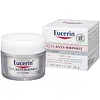What's inside
What's inside
 Key Ingredients
Key Ingredients

 Benefits
Benefits

 Concerns
Concerns

 Ingredients Side-by-side
Ingredients Side-by-side

Water
Skin ConditioningGlycerin
HumectantPropanediol
SolventNiacinamide
SmoothingBetaine
HumectantVegetable Oil
Skin ConditioningCaprylic/Capric Triglyceride
MaskingSilica
AbrasiveDimethicone
EmollientHydrogenated Polyisobutene
EmollientIsodecyl Neopentanoate
EmollientOctyldodecanol
EmollientStearyl Alcohol
EmollientDipentaerythrityl Hexacaprylate/Hexacaprate
EmulsifyingTridecyl Trimellitate
EmollientAlcohol Denat.
AntimicrobialButylene Glycol
HumectantPhenylpropanol
MaskingAmmonium Acryloyldimethyltaurate/Vp Copolymer
Panthenol
Skin ConditioningTocopheryl Acetate
AntioxidantAcrylates/C10-30 Alkyl Acrylate Crosspolymer
Emulsion StabilisingCaprylyl Glycol
EmollientTridecyl Stearate
EmollientCarnosine
Skin ConditioningParfum
MaskingNeopentyl Glycol Dicaprylate/Dicaprate
EmollientMelatonin
AntioxidantCetyl Alcohol
EmollientGlyceryl Stearate
EmollientPentylene Glycol
Skin ConditioningSodium Hyaluronate Crosspolymer
HumectantDisodium EDTA
PEG-75 Stearate
PEG-8
HumectantCarbomer
Emulsion StabilisingPolysorbate 20
EmulsifyingSodium Lactate
BufferingCeteth-20
CleansingSteareth-20
CleansingTetradecyl Aminobutyroylvalylaminobutyric Urea Trifluoroacetate
Skin ConditioningTocopherol
AntioxidantAscorbyl Palmitate
AntioxidantMagnesium Chloride
Helichrysum Italicum Extract
AntiseborrhoeicAscorbic Acid
AntioxidantCitric Acid
BufferingPalmitoyl Tripeptide-1
Skin ConditioningPalmitoyl Tetrapeptide-7
Skin ConditioningCI 15985
Cosmetic ColorantCI 19140
Cosmetic ColorantWater, Glycerin, Propanediol, Niacinamide, Betaine, Vegetable Oil, Caprylic/Capric Triglyceride, Silica, Dimethicone, Hydrogenated Polyisobutene, Isodecyl Neopentanoate, Octyldodecanol, Stearyl Alcohol, Dipentaerythrityl Hexacaprylate/Hexacaprate, Tridecyl Trimellitate, Alcohol Denat., Butylene Glycol, Phenylpropanol, Ammonium Acryloyldimethyltaurate/Vp Copolymer, Panthenol, Tocopheryl Acetate, Acrylates/C10-30 Alkyl Acrylate Crosspolymer, Caprylyl Glycol, Tridecyl Stearate, Carnosine, Parfum, Neopentyl Glycol Dicaprylate/Dicaprate, Melatonin, Cetyl Alcohol, Glyceryl Stearate, Pentylene Glycol, Sodium Hyaluronate Crosspolymer, Disodium EDTA, PEG-75 Stearate, PEG-8, Carbomer, Polysorbate 20, Sodium Lactate, Ceteth-20, Steareth-20, Tetradecyl Aminobutyroylvalylaminobutyric Urea Trifluoroacetate, Tocopherol, Ascorbyl Palmitate, Magnesium Chloride, Helichrysum Italicum Extract, Ascorbic Acid, Citric Acid, Palmitoyl Tripeptide-1, Palmitoyl Tetrapeptide-7, CI 15985, CI 19140
Water
Skin ConditioningGlycerin
HumectantEthylhexyl Cocoate
EmollientHydrogenated Coco-Glycerides
EmollientStearyl Alcohol
EmollientButylene Glycol
HumectantCetyl Alcohol
EmollientCaprylic/Capric Triglyceride
MaskingButyrospermum Parkii Butter
Skin ConditioningGlyceryl Stearate Citrate
EmollientOctyldodecanol
EmollientTocopheryl Acetate
AntioxidantUbiquinone
AntioxidantBiotin
AntiseborrhoeicBiosaccharide Gum-1
HumectantSodium Ascorbyl Phosphate
AntioxidantZea Mays Oil
EmulsifyingBeta-Carotene
Skin Conditioning1,2-Hexanediol
Skin ConditioningCarbomer
Emulsion StabilisingSodium Hydroxide
BufferingTrisodium EDTA
Dehydroacetic Acid
PreservativePhenoxyethanol
PreservativeWater, Glycerin, Ethylhexyl Cocoate, Hydrogenated Coco-Glycerides, Stearyl Alcohol, Butylene Glycol, Cetyl Alcohol, Caprylic/Capric Triglyceride, Butyrospermum Parkii Butter, Glyceryl Stearate Citrate, Octyldodecanol, Tocopheryl Acetate, Ubiquinone, Biotin, Biosaccharide Gum-1, Sodium Ascorbyl Phosphate, Zea Mays Oil, Beta-Carotene, 1,2-Hexanediol, Carbomer, Sodium Hydroxide, Trisodium EDTA, Dehydroacetic Acid, Phenoxyethanol
Ingredients Explained
These ingredients are found in both products.
Ingredients higher up in an ingredient list are typically present in a larger amount.
Butylene Glycol (or BG) is used within cosmetic products for a few different reasons:
Overall, Butylene Glycol is a safe and well-rounded ingredient that works well with other ingredients.
Though this ingredient works well with most skin types, some people with sensitive skin may experience a reaction such as allergic rashes, closed comedones, or itchiness.
Learn more about Butylene GlycolThis ingredient is an emollient, solvent, and texture enhancer. It is considered a skin-softener by helping the skin prevent moisture loss.
It helps thicken a product's formula and makes it easier to spread by dissolving clumping compounds.
Caprylic Triglyceride is made by combining glycerin with coconut oil, forming a clear liquid.
While there is an assumption Caprylic Triglyceride can clog pores due to it being derived from coconut oil, there is no research supporting this.
Learn more about Caprylic/Capric TriglycerideCarbomer is a polymer of acrylic acid. Its main role is to create a gel consistency.
A high amount of carbomer can cause pilling or balling up of products. Don't worry, most products contain 1% or less of carbomer.
Cetyl Alcohol is a fatty alcohol. Fatty Alcohols are most often used as an emollient or to thicken a product.
Its main roles are:
Though it has "alcohol" in the name, it is not related to denatured alcohol or ethyl alcohol.
The FDA allows products labeled "alcohol-free" to have fatty alcohols.
Learn more about Cetyl AlcoholGlycerin is already naturally found in your skin. It helps moisturize and protect your skin.
A study from 2016 found glycerin to be more effective as a humectant than AHAs and hyaluronic acid.
As a humectant, it helps the skin stay hydrated by pulling moisture to your skin. The low molecular weight of glycerin allows it to pull moisture into the deeper layers of your skin.
Hydrated skin improves your skin barrier; Your skin barrier helps protect against irritants and bacteria.
Glycerin has also been found to have antimicrobial and antiviral properties. Due to these properties, glycerin is often used in wound and burn treatments.
In cosmetics, glycerin is usually derived from plants such as soybean or palm. However, it can also be sourced from animals, such as tallow or animal fat.
This ingredient is organic, colorless, odorless, and non-toxic.
Glycerin is the name for this ingredient in American English. British English uses Glycerol/Glycerine.
Learn more about GlycerinOctyldodecanol is a fatty alcohol. It is primarily used to enhance the texture of products.
As an emulsifier, Octyldodecanol helps prevent the oils and waters from separating. It also prevents ingredients from creating foam when shaken.
Octyldodecanol is created by reducing fatty acid to an alcohol.
Due to its high molecular weight, it does not get absorbed into the skin.
Learn more about OctyldodecanolStearyl Alcohol is a type of fatty alcohol from stearic acid. It is a white, waxy compound used to emulsify ingredients.
Fatty Alcohols are most often used as an emollient or to thicken a product. Emollients help soothe and hydrate the skin by trapping moisture.
They are usually derived from natural fats and oils and therefore do not have the same drying or irritating effect as solvent alcohols. FDA allows products labeled "alcohol-free" to have fatty alcohols.
Learn more about Stearyl AlcoholTocopheryl Acetate is AKA Vitamin E. It is an antioxidant and protects your skin from free radicals. Free radicals damage the skin by breaking down collagen.
One study found using Tocopheryl Acetate with Vitamin C decreased the number of sunburned cells.
Tocopheryl Acetate is commonly found in both skincare and dietary supplements.
Learn more about Tocopheryl AcetateWater. It's the most common cosmetic ingredient of all. You'll usually see it at the top of ingredient lists, meaning that it makes up the largest part of the product.
So why is it so popular? Water most often acts as a solvent - this means that it helps dissolve other ingredients into the formulation.
You'll also recognize water as that liquid we all need to stay alive. If you see this, drink a glass of water. Stay hydrated!
Learn more about Water